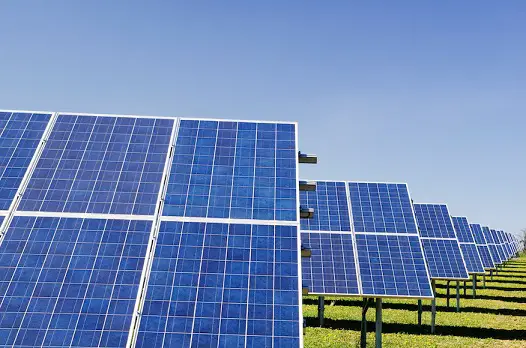First Solar (FSLR) announced it will invest $1.2 billion into manufacturing facilities in the US, now that the Inflation Reduction Act (IRA) has passed.
Already the largest US-based solar manufacturer, $1 billion of that investment will go into a brand new vertically integrated factory based in the southeast, while $185 million will be devoted to upgrading its factories in northwest Ohio.
The company estimates this will allow it to expand its US capacity to 10 gigawatts over three years, and will see it producing a new solar panel every 1.6 seconds, according to CEO Mark Widmar.
In an interview, Widmar said, “This expansion is an important step towards achieving self-sufficiency and solar technology which in turn supports America’s clean energy security ambitions, its deployment of solar at scale, and its ability to lead with innovation.”
The company will be taking advantage of part of the $30 billion set aside in the IRA for solar panels, wind turbines, batteries, as well as the $10 billion investment tax credit for building clean technology manufacturing facilities.
Widmar said, “Because of the decision that was made for the passage of the IRA, we are prioritizing the U.S. market. You know, we believe that with the IRA, we have a durable industrial policy foundation, one that we’ve long been advocating for. It’s comprehensive and this foundation will enable the solar industry as a whole.”
First Solar stock has risen about 25% in jut the last month, following passage of the IRA. BoA securities upgraded the stock for a second time, with an estimate the company will receive as much as 17 cents per watt in tax credits for manufacturing. Analyst Julien Dumoulin-Smith predicted in a note to clients that the credits would put over $3 billion in cash in the company’s accounts by 2026.
In its last earnings report, the company had reported that its bookings backlog presently was a record 44.3 gigwatts.
First Solar already operates two manufacturing facilities in Lake township and Perrysburg, Ohio. Its third factory will be commissioned in the first half of next year, while it has identified a “small number of states” for a fourth facility, and hopes to finalize a location for it by the end of Q3 of next year.
The company estimates the new investment will generate 850 manufacturing jobs, which will bring its total workforce up to 3,000 employees by 2025.
Widmar said, “We always look across many different dimensions for a site selection, including the workforce, the quality of the labor force, the proximity to our supply chain partners, ability to get access to power generation and competitive power prices. It’s a comprehensive balanced scorecard that really has to ensure not just near term but long term strategic objectives that we would envision for our manufacturing facility.”

